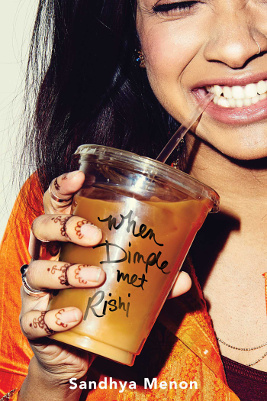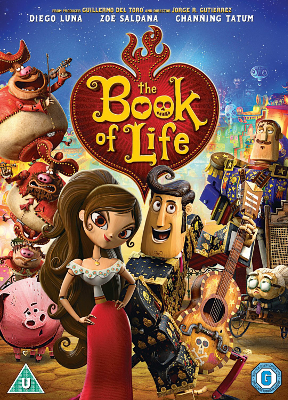 First Published: 1st June, 2017
First Published: 1st June, 2017
Genre: Young Adult Contemporary Romance / Novel
Available: Amazon.com | Amazon UK
Dimple is heading to Insomnia Con, a summer course with a contest to design an app. What she doesn’t know is Rishi, the boy her parents have arranged for her to marry, will also be there.
I liked Dimple’s relationship with her family. There’s tension between her dream of a career in computing and their dream of her marrying a nice Indian man. Dimple faces not being seen as Indian enough by Indians due to growing up in the USA, or American enough by white Americans because she’s Indian. This is also contrasted by Rishi, who has a different approach to the conflicting cultural expectations.
Unfortunately, the edition I read had all Hindi words in italics. This included direct speech and words like salwar kameez. I’m not fond of this formatting choice at the best of times, because it serves to emphasise and other anything that isn’t in English. But in this case, it made the first section a nightmare to read, due to the volume of italics sprinkled throughout. This is a publisher choice rather than an author choice, but I’d hope they’d consider revoking italicising privileges for the book formatter when it comes to the next edition.
There are things I liked about the romance. Dimple and Rishi genuinely like each other and get along, rather than hating each other and only dating because they think the other is hot. The issues they’re navigating are mainly about figuring how things will fit with their lives.
However, there were some things I didn’t like. Dimple hits Rishi frequently. Not realising that playful punches are too hard is something I had issues with as a teen, so I could relate to that (though it wasn’t cute or funny, which is how the book portrays it). But when Dimple wanted to punch him because she was angry, that was something else. I don’t find it cute when someone wants to hit their partner to hurt them, whether they manage to pull back from striking them or not. There are also other instances of ignoring boundaries, such as pressuring Rishi into eating something he doesn’t want to eat. There’s some pushback when she invades Rishi’s privacy, but overall, it’s shown as a good thing to ignore people’s boundaries because it’s for their own good.
The romance also means everything else stops. The plot is gone, the family relationships move to the background, and Dimple’s friendship with Celia isn’t particularly explored. I’d hoped for more of a balance between the elements.
This wasn’t the book I expected when it came to the overall theme. Coding is Dimple’s passion, yet it’s minimised throughout the book. There’s a discussion about Dimple’s app idea, and after that, a few token references here and then. In contrast, Rishi’s passion for art does have development. He’s shown drawing and going to art events. The art aspects of the course are the ones that get the most time, such as the photography icebreaker and the talent show. It’s much more of a book about art than one about computer science, which wasn’t what I was hoping to read.
The lack of time spent on the app development had another issue due to Dimple’s idea. She wants to make a reminder app for people who have medication to take, which will work as a game with rewards. This is based on her dad finding it difficult to remember to take his medicine as a diabetic. She doesn’t discuss this with her dad, and no disabled people are involved at any point in the process, which means it’s based on what she’s assuming people need. Non-disabled people having control of resources for disabled people is an issue, so it doesn’t sit well here.
Being marginalised can mean facing microaggressions and bullying constantly, particularly in spaces dominated by more privileged people. The book tries to tackle this, but I have mixed feelings about how this turned out. Dimple is on high alert for signs of such behaviour, often assuming the worst before it happens. This is a realistic reaction to being in an unsafe space. But the narrative is arranged so that Dimple is never wrong. She never lashes out at someone based on an assumption that doesn’t turn out to be true. When she assumes a group of people are obnoxious based on their appearance, it turns out they’re really terrible. When she assumes someone is going to cause issues about her name, that person does indeed end up causing issues. I’d have liked to see some nuance here, in that assuming the worst and reacting aggressively will mean sometimes getting it wrong and having to smooth it over. I don’t count her initial reaction to Rishi here, as that was a case of reacting to behaviour that appeared threatening, rather than assuming he would do something like that in the future based on his clothing.
The strength in representation is that Dimple and Rishi are Indian and Hindu. The other areas are mainly on the side, as they’re supporting characters rather than the main characters. Dimple’s dad is diabetic and her auntie uses a wheelchair. Dimple’s friend Celia is bisexual and half Dominican. Celia does stray into some bisexual tropes, such as being the one with the active sex life and her relationships with boys being shown as much more serious (in other words, it’s just a phase for a girl to be interested in girls). I would also have liked to see other girls (including other Indian girls) who were at the convention to code. As it stands, it had a not-like-other-girls vibe, as the two other girls shown don’t appear to be heading into computing professions.
There was also the issue of small jarring references which could easily have been cut and kept the story exactly the same. For example, the evil rivals are compared to intersex people at one point as an insult, by stating they have micro penises. Also, Dimple criticises the use of “Aight” by saying no one she knows uses it unironically. There are things to be said about a rich white boy using AAVE to sound cool, but criticising him for not sufficiently making fun of AAVE is not one of those. And for my last example, the line where Dimple notes Rishi is “dressed pretty sanely for a psychotic attacker”, because obviously creepy people are all psychotic and insane. There were enough small things like this to bother me. I’d have liked it better if no marginalised group appeared only as a punchline or an insult.
This was a light read with a few funny moments. Though there were some things I didn’t like, I thought it was okay in general. I’m not really the audience for romances that only focus on the romance, so the lack of development of the contest plot and the non-romantic relationships were big downsides for me. This will appeal to fans of contemporary romance, but will likely be a disappointment for those interested in the STEM angle.
[A copy of this book was received from the publisher for review purposes]
 First Published: December, 2015
First Published: December, 2015 Genre: Children’s Fantasy / Film
Genre: Children’s Fantasy / Film Series: Root Code, #3
Series: Root Code, #3 Series: Mutants, #3
Series: Mutants, #3